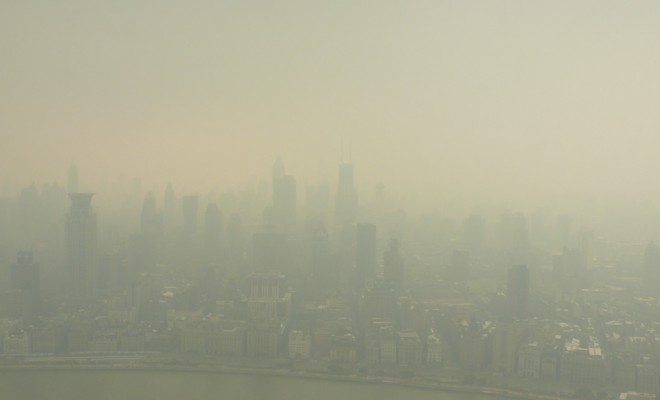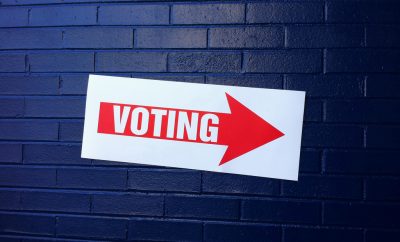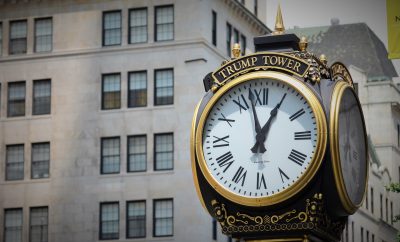 Image courtesy of [Nicholas Wang via Flickr]
Image courtesy of [Nicholas Wang via Flickr]
Energy and Environment
Beijing Knows How to Curb Its Air Pollution, So Why Doesn’t Texas?
One of the most hazardous locations for one’s lungs is Texas. A site of many refineries and factories, the state already presents itself as a major emitter; but its activity exceeds the second ranking states by a wide margin. For example, nitrogen oxide emissions from smoke stacks and vents surpass number two ranking Pennsylvania by more than 60 percent, and tonnage of volatile organic compounds eclipse number two Colorado by more than 44 percent. If this is not enough, many state officials are siding with the industries themselves in an attempt to combat the implementation of tighter emissions regulations. Their testimonies argue that toughening up the standards will be too expensive and not necessarily beneficial to public health.
This conflict extends far beyond the Lone Star State. The Supreme Court itself is locked in a debate as to what measures are necessary and how much they will cost. Dissenters argue that the Obama Administration’s latest initiatives via the Environmental Protection Agency do not contain a cost-benefit analysis. The argument leans on wording in the Clean Air Act, which stipulates that regulations be “appropriate and necessary.” But who has the right to unilaterally determine what is appropriate and necessary? A rough estimate at a “quantifiable” benefit estimates that 11,000 unnecessary deaths can be prevented each year. Calculations diverge as to the monetary expenses and savings; one concludes that $9.6 billion in expenses will result in $6 billion in savings, while another maintains that those same costs can result in up to $30-90 billion in savings. These numbers should not be the focus of the decision, though. If thousands of people might live on who would otherwise die, this should be justification enough to implement the necessary measures.

Henan Province, China. Courtesy of V.T. Polywoda via Flickr.
Ozone and air contamination are a widely pervasive problem; the lives that potentially could be saved are not just in urban areas. Gases and ozone emissions are not stagnant; many studies and measurements have found excessively high air contaminants in rural and wide-open areas such as the Colorado mountains and the Native American reservations in Utah. In addition to the problem of poor restrictions on emission, the standards as to what technically constitutes contamination or poor air quality are too lax. For this reason, non-emitting areas are facing health risks that are not legally deemed as such.
Air pollution is a perfectly remediable problem. In the early 1900s, the great steel city of Pittsburgh rivaled Victorian London for poor air quality. But a series of laws and regulations and more efficient use of fuel led the city to be declared one of the most livable by the 1980s; the characteristic smoke and pollution cleared away almost entirely. A more poignant example is Japan. A system of local governments responding to local concerns but acting seamlessly with national and international-level reform efforts enabled the country to curb pollution without derailing economic growth. In fact, considering the incentives to invest in research and new technologies, the formulation of new overseeing agencies and subsequent job creation, by 1980 air pollution control became a profitable industry itself!
This is perhaps one of the most frustrating aspects of the debates in the Supreme Court right now; all the concerns about cost effectiveness and damage to industry and the economy are based on perceptions of the status quo. People seem to be under the impression that the objective is simply to cap emissions while maintaining all the other aspects of day-to-day life and commercial activity. Rather, as demonstrated by the multi-layered action of Japan, it is a complicated process that requires commitment by many parties, but ultimately a worthwhile one because it is clearly doable and benefits not just the health of the people but can be financially desirable, as well.
This past November, an interesting thing occurred in Beijing. In anticipation of the arrival of many world leaders for an Asia-Pacific Economic Cooperation (APEC) meeting, the government mandated a six-day vacation for urban residents, which included traffic restrictions and the closure of factories in an attempt to clear the smog. It was a monumental success; in less than a week, what came to be labeled as “APEC Blue” dominated the skies. The striking effects of this action has galvanized progressive voices and demonstrated to the nation and world that there is a plethora of options from which we can draw that quite effectively address the problem.

Courtesy of Nicolo Lazzati via Flickr.
Air pollution is one of the most visible and widespread consequences of industrialization, rampant consumption, and natural resource use. It may not have as immediate or drastic consequences as some other environmentally related challenges, but it certainly is dangerous. Most importantly, there are so many things that we can do to address it, which may be surprisingly effective and rapid in doing so, while at the same time improving our own habits and ways of life.








Comments